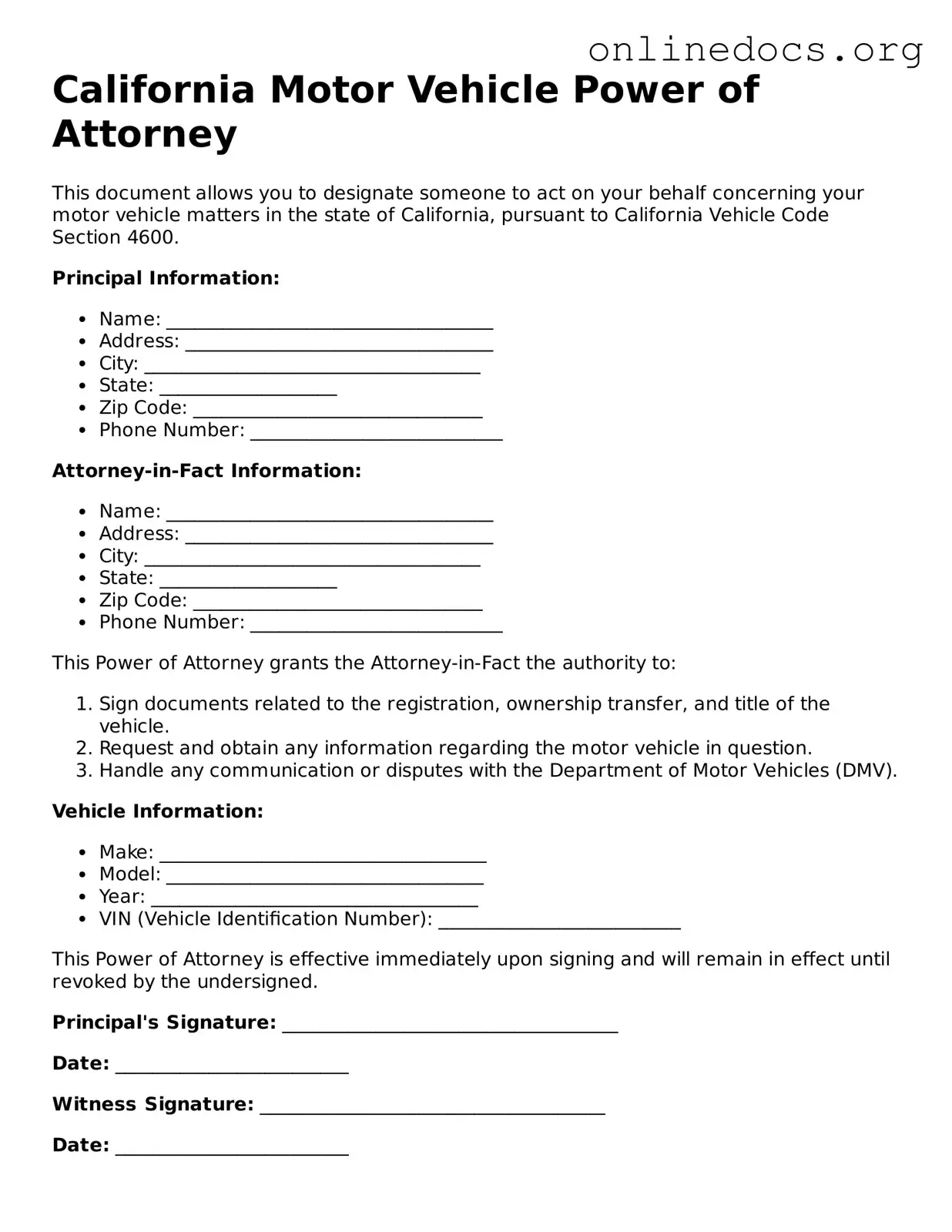Filling out the California Motor Vehicle Power of Attorney form can seem straightforward, but many individuals make common mistakes that can lead to complications. Understanding these pitfalls can help ensure that the form is completed correctly, allowing for a smooth transfer of authority over vehicle-related matters.
One frequent mistake is failing to provide complete information about the vehicle. It's essential to include the vehicle's make, model, year, and VIN (Vehicle Identification Number). Omitting even one detail can create confusion and may invalidate the document. Always double-check that all information is accurate and complete.
Another common error is neglecting to sign the form. The Power of Attorney is not valid without the signature of the person granting authority. Additionally, if the form is signed but not dated, it may lead to questions about its validity. Remember, both the signature and the date are crucial for the document's acceptance.
Many people also overlook the need for notarization. In California, a Power of Attorney form must be notarized to be legally binding. Skipping this step can render the document ineffective. It's wise to visit a notary public to ensure that all requirements are met before submitting the form.
Some individuals mistakenly believe that they can grant unlimited authority. While it’s important to specify the powers being granted, vague language can lead to misunderstandings. Clearly outline the specific actions the agent is authorized to take, whether it’s selling a vehicle, transferring title, or handling registration matters.
Another mistake involves not designating a backup agent. Life is unpredictable, and the person you initially choose may not be available when needed. By naming an alternative agent, you ensure that someone can step in if the primary agent is unable to fulfill their duties.
In addition, people often forget to review the form for errors after filling it out. Simple typos or miswritten information can lead to delays or even legal issues. Taking a moment to carefully review the completed form can save a lot of time and trouble down the line.
Lastly, individuals sometimes fail to communicate with their chosen agent. It’s important to discuss the responsibilities and expectations with the person you’re granting power to. This conversation can clarify roles and ensure that everyone is on the same page, reducing the chances of conflict or misunderstanding later on.
